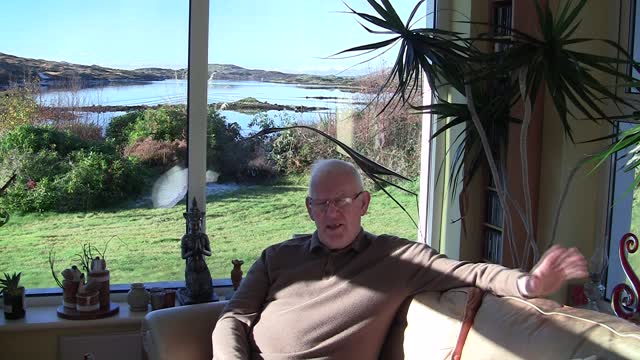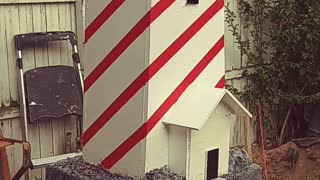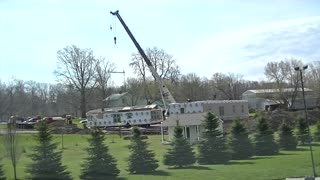Premium Only Content

Old Irish Folk Traditions. The Sweat House
Tucked away in the back of many fields and in out of the way places in Ireland are small overgrown huts that look like miniature tombs. They are constructed of stone with small entrances and covered with sods, they are, in fact, sweat houses. It may come as a surprise to many that Ireland has its own tradition of the ‘sweat lodge', mostly we associate this with the Native American culture and, for some time, American style sweat lodges have been conducted here also. These are mostly based on the Inipi ceremony of the North American Plains Indians and a sweat is undertaken usually for initiation, purification or in preparation for the vision quest. Were our own sweat houses used for similar purposes?
Firstly, it must be stated that little information has survived to tell us what exactly they were used for. Although sweat houses seem to have been constructed up to the end of the nineteenth century(1) the knowledge of their use has been forgotten through lack of interest, embarrassment or as a result of the destruction and mass emigration of the famine. It has been pointed out that, in post-famine Ireland, there seems to have been a kind of aversion to old ways and natural things that has resulted in the outwardly respectable and ultra-conservative attitude that can be found in many parts of the country today. An example of this was the idea of "famine food", which was the eating of any kind of wild food, i.e. blackberries, implying that one had to be hard up to eat it.
As for the sweat houses many nineteenth century antiquarians variously reported that it was used as a ‘sweating cure' for many different ailments - and this seems to be true up to a point. However, as in many societies when faced with foreign anthropologists, the temptation to lead them up the garden path is enormous. It has also been pointed out that the investment in turf required to heat one of the sweat houses would have been in the order of two and a half donkey loads. This would have been an extravagant expense simply to get rid of the few aches and pains that most of the population suffered from anyway. In order to be more worthwhile, the use of these structures must have been important indeed.
The sweat houses are distributed over a number of counties, primarily Leitrim, Louth, Cavan, Fermanagh and parts of Sligo. These were all poor counties so it is doubly interesting given the economic investment in the use of the sweat house. Sweat houses are also sited away from dwellings and are often close to streams. They can be quite hard to find as I can attest to having looked for examples on the Cooley Peninsula. The houses are usually about 1.75m high and 2m in diameter with a small entrance and often a small smoke hole which could be covered with a flat slab. The method of heating was described as building a fire in the house and allowing it to completely burn out, the ashes were then raked out and rushes or other plants strewn on the floor. A stone was placed over the smoke hole and the patient entered naked. The door was blocked and the patient sweated profusely, the plants on the floor giving off moisture to give an effect similar to a sauna. Soot has been found inside the sweat houses showing that a fire was built in them, however, John Matthews assures me that he has come across references to the use of hot rocks heated outside the sweat house and then placed inside - much the Native American methods. After the sweat, the patient would emerge and go for a swim in the river as in modern Scandinavian saunas. If old or infirm they would go to bed for a few hours(2). It has also been recorded that mixed groups of men and women used sweat houses,
-
 0:32
0:32
WochitNow
5 years agoOprah Winfrey Cautiously Sends Partner To The Guest House
220 -
 0:59
0:59
Shannonsexplorations
5 years agoGreat old house
152 -
 0:32
0:32
WochitNow
6 years agoJohn Stamos Wants To Work On 'Full House' Prequel After 'Fuller House' Ends
42 -
 1:30
1:30
WTMJMilwaukee
5 years agoWith Irish Fest comes Irish food...
789 -
 0:07
0:07
Cloud
5 years ago $0.03 earnedStraw house
1802 -
 0:58
0:58
WochitNow
6 years agoFilmmaker "Knocks Down The House" For Alexandria Ocasio-Cortez Documentary
1.25K -
 0:19
0:19
G2F1974
5 years ago $3.87 earnedLight house
3.13K3 -
 1:11
1:11
mjtwny
4 years agoFast House Building
471 -
 0:49
0:49
WochitNow
6 years agoStar From 'The Haunting of Hill House' Might Return For Season 2
25 -
 0:06
0:06
maritimedude
5 years ago $0.02 earnedHouse fire..
157